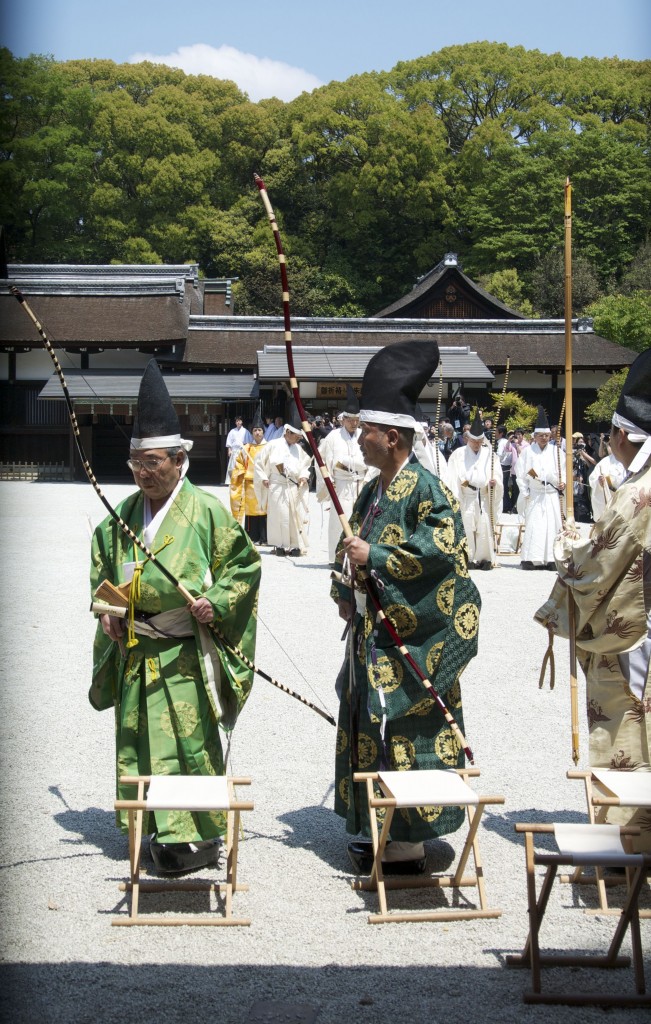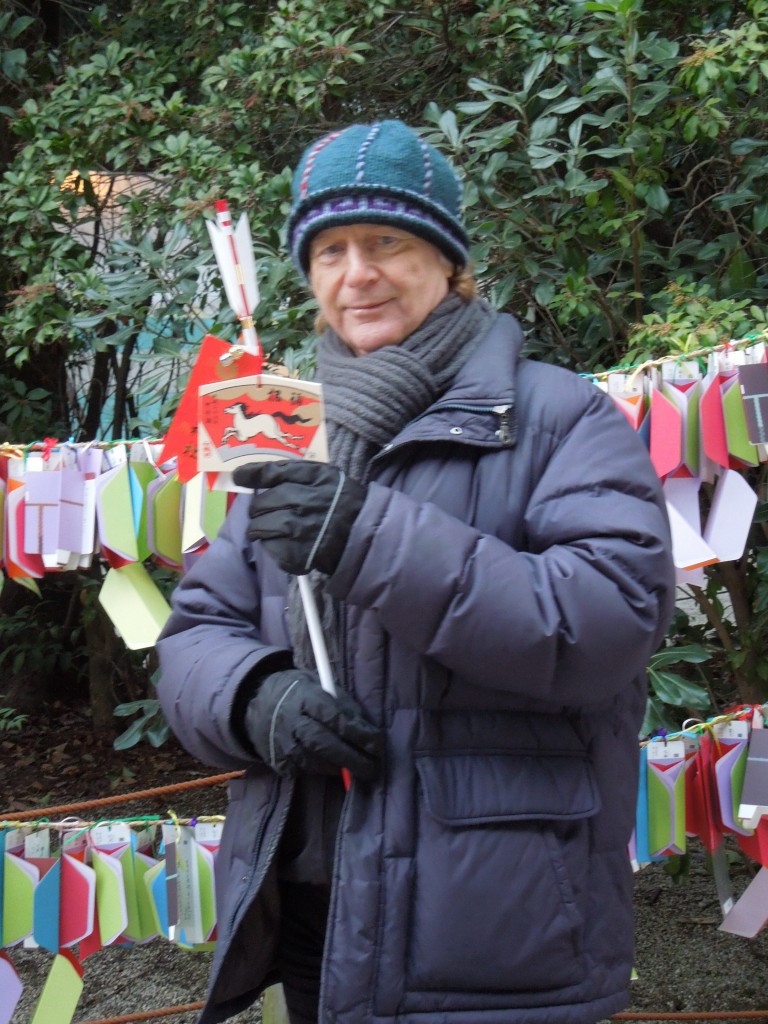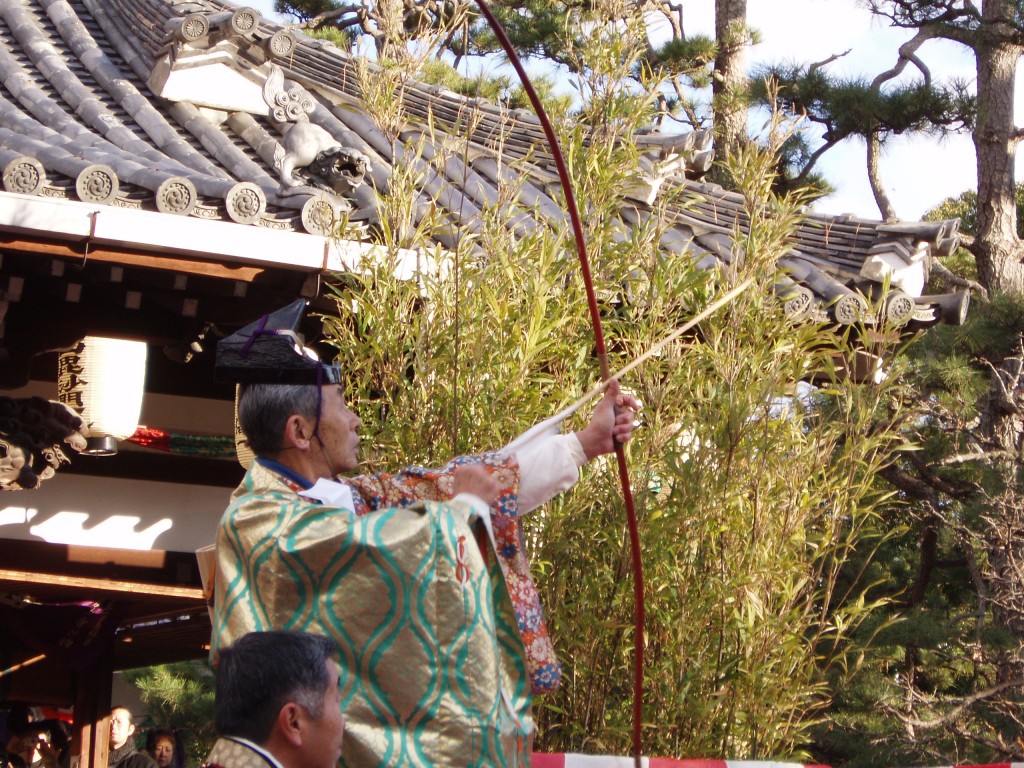
Today’s Busha Shinji ceremony at Shimogamo Jinja is a pre-Aoi Festival purification rite to clear the air of evil spirits. In this way it serves to prepare suitable conditions for the procession on May 15 which lies at the heart of the whole affair.

A happy shrine-goer with a New Year promise of one year's good fortune
Arrows of course play a prominent part in Shinto affairs, particularly at New Year when they act as a symbolic good luck charm for the coming year. Firing arrows in the air is a common form of clearing away evil spirits, and similar customs are found across Asia. Indeed, the notion of arrows as a means of dispelling evil has roots in mythology, with the very earliest Indian texts telling of Siva and his fellow gods killing terrifying demons.
The Japanese developed their own version of demon-slaying arrows, with Emperor Jimmu depicted carrying a bow in his colonising quest to spread the virtues of divine rule. According to Wikipedia, a legend about the primal use of bow and arrow accrued around Yorimasu Minamoto in the twelfth century, as told here:
At that time, the Imperial Palace was taken over by an evil demon, which caused the Emperor to fall ill with great anxiety and suffering. When the Imperial High Priests tried and failed in their efforts to destroy the demon and dispel the Imperial household of its influence, they were at a loss. Finally, an archer, Yorimasu Minamoto, was summoned to the Imperial Palace in the hopes of slaying the demon with his bow and arrow, ridding the palace of this plague.
With a steady hand and a virtuous heart, Yorimasu Minamoto vanquished the demon with the first arrow, and his bow was declared to be a Hama Yumi; an “Evil-Destroying Bow”, (and the first arrow a Hamaya; a “Evil-Destroying Arrow”). Since then, Hama Yumi have been used in Buddhist and Shinto rituals of purification. (For example–Shihobarai–the Purification of the Four Directions.)
As a result, Hamaya (arrrows) are sold even today at shrines as good-luck charms; smaller replicas have been placed in shrines and people’s homes. It is believed that even one Hamaya which has been blessed by a Shinto priest carries great spiritual power and will bring protection against the forces of evil. They are also believed to have the ability to attract vast good fortune.
Purification of one of the Four Directions


Keep on writing, great job!